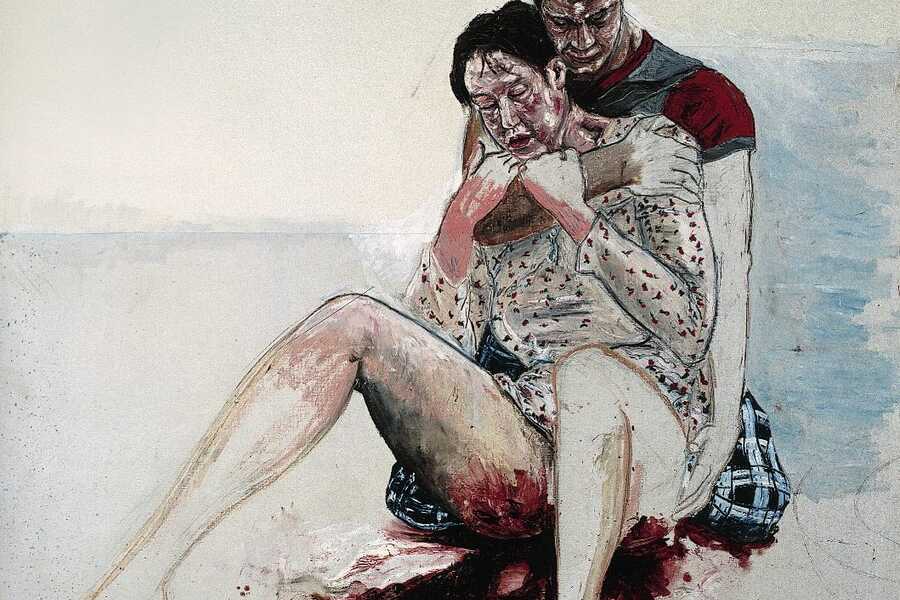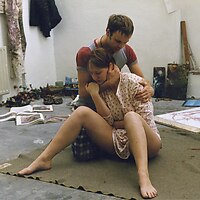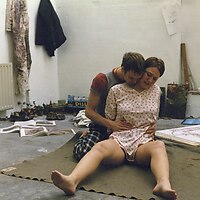Methods for painting

My work consists of the creating and painting of fictitious events. I stage the drama in my studio. Actors playing and reconstructing the scene in front of a camera. Before I start I do my research and read a lot about the story, I gather statements and images. I try to visit the places I will reconstruct and take photographs of the environment in which the story took place. I talk to people who were really there and have experienced the story I want to show in my painting. I collect clothes they were wearing or have them made for me.
I take a lot of photographs of the actors in my studio. The best ones I will use for the life size paintings. De actors are set in scenes such as an execution, a miscarriage, a rape, a war scene, etc.
The painting tells a fictitious story but the metaphor of the painting can’t be ignored because of the affect the painting will evoke. The emotion the painting can bring on is real. For this, poetry or art is more suited than CNN. Journalism informs you but gives you less feeling of suffering, confusion, deprivation or fear. Journalism is much more superficial and does not appeal to beauty or style as art can do.
A work of art gives you the opportunity to identify with an other person. With the victim but also with the offender. I try not to work with set morals because your frame of mind will stay within a confined area and the impact of the work will diminish. The way that is dealt with violence and sexuality within my work increases the possibility to identify with the subject in the paintings. Even if they’re not the phantasies of the spectator, the experience will be physical and less easy to ignore. A painting claims more time and if you’re moved by the work you will take more time to read it. Not only the depiction but also the way it has been painted claims your attention.



